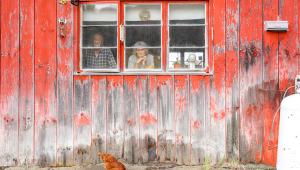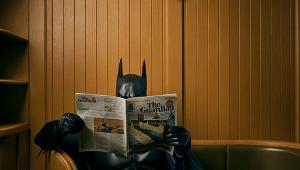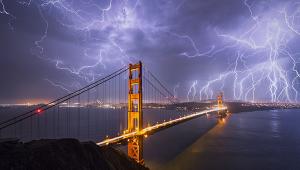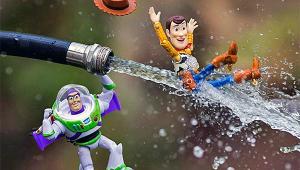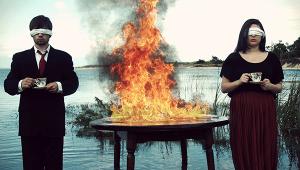Paul Edmonson on How to Capture Fine Art Landscape Images in "Heavily Photographed" Areas
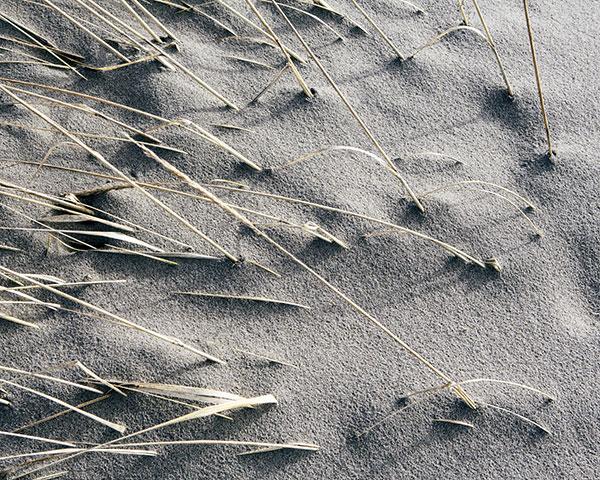
You don’t start off talking about photography when you talk to Paul Edmondson about how he creates his striking fine art landscape images. You talk about what he notices and what he chooses from all that the landscape offers.
Maybe more important, you talk about what he chooses to leave out, to eliminate from all that’s offered. You do this because his photography starts with his ability to notice, discern, and decide.
“For me, the image-making process is often a quiet and solitary experience filled with a lot of creative angst,” he says. The angst is due to the fact that he often photographs at places that are, as he says, “heavily photographed” by others. While there’s much to photograph at these places, “everyone has photographed everything in every imaginable way, and those photographs have been widely seen, especially through social media.”
Hence the decision-making process. “I pull back a little bit before I start photographing,” he explains. “I take time to look around very closely, very carefully, without shooting. I try to figure out how to get an image that’s different. If you’re going to do it, it has to be different. At least, different enough if you want to stand out.”

Go Minimal
Edmondson’s route to shooting something different involves capturing images that evoke the feeling of a place; he’s not interested in producing picture-postcard images. His advantage is that he’s naturally drawn to qualities that make his work different. Basically he’s all about paring a thing down to its essence rather than trying to cram in too much or trying to overwhelm with detail, color, or composition.

“There’s been a really positive response to my fine art work from people who want a clean, minimal look,” he says. “Line, shape, form, texture—that’s what resonates.” And that’s what he looks for; that’s how he likes to view and portray the natural world. He doesn’t have to try to outguess the market; he simply responds to what naturally attracts, interests, and inspires him.
Isolate the Essential Element
Edmondson’s approach is to search out the essential creative element—the one thing that attracted him or the one he feels will make the photo compelling. Then it’s a matter of finding a different way to include, frame, or isolate that element.
There are two main components to his technique: shoot aperture preferred because depth of field is primary, and adjust the shutter speed for a slight overexposure.

“I like the image to be a little blown out,” he says. “I know that goes against what you’re supposed to do, but I like a warm, muted look.” He usually exposes about one-third stop over, which preserves details even in the blown-out areas. “In Lightroom and Photoshop I can also lighten things up in the Raw file without losing anything,” he says.

Keep It Simple
Edmondson doesn’t think of himself as technical; he’s not someone who obsesses about “all the nuances of Photoshop curves.” He wants the image to look like what he wants it to look like, because he believes that’s how it will best communicate.
He’s pared down not only his technique, but his camera equipment as well. “Overall, the gear isn’t that important, and I don’t have as much as I used to. I got rid of a lot.”


Less gear means fewer decisions about what to use and more time and attention for the task of making decisions that eliminate the clutter and focus on the essentials.

“I’d most like to be in front of the ocean with my camera,” Paul Edmondson says. “Up on a cliff, looking at the sky, the horizon, and the water, and then just be there and photograph for days, even weeks, to capture the nuances of the light. That’s what’s meaningful for me.”

You’ll find a wide selection of Paul Edmondson’s fine art and other images at pauledmondsonphotography.com.
What’s in Edmondson’s Gear Bag
Paul Edmondson’s basic kit is a Canon EOS 5D Mark III and two zooms: his go-to EF 24-70mm f/2.8L USM (most of the photos here were taken with it) and his EF 70-200mm f/2.8L USM.
“I recently got a Fuji X100T,” he says. “It’s my first attempt at shooting with a mirrorless, and I like it mostly for backpacking, hiking, some street photography and family travel—it’s so lightweight.”
He also shoots a bit with his iPhone 7. “Most stock agencies now accept iPhone photos, which is smart, as pictures are used smaller and smaller now. It’s a great tool for composition—like a previsualizer, a Polaroid kind of camera.”
He carries a Gitzo Series 1 Traveler carbon-fiber tripod with an Arca-Swiss Monoball. “And I use a Really Right Stuff camera plate for the Canon.”
And though he’s gotten rid of a lot of gear lately, he has his eye on the Fuji GFX 50S medium format digital camera. “I’m thinking of getting it with a couple of lenses to up the level of my fine art work.”
- Log in or register to post comments



